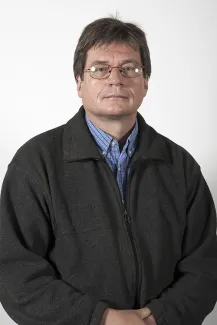Farquharson, Louise M., et al. “Sub-Aerial Talik Formation Observed across the Discontinuous Permafrost Zone of Alaska”. Nature Geoscience, vol. 15, no. 6, 2022, pp. 475-81, https://doi.org/10.1038/s41561-022-00952-z.
Vladimir Romanovsky
First name
Vladimir
Last name
Romanovsky
Identity Disambiguation
Affiliation(s)
Open Researcher and Contributor ID (ORCID)
Web of Science
2022
2021
2020
2019
2018
- Parazoo, Nicholas C., et al. “Detecting the Permafrost Carbon Feedback: Talik Formation and Increased Cold-Seasonrespiration As Precursors to Sink-to-Source Transitions”. The Cryosphere Discussions, 2018, pp. 1-44, https://doi.org/10.5194/tc-2017-18910.5194/tc-2017-189-RC110.5194/tc-2017-189-RC210.5194/tc-2017-189-AC110.5194/tc-2017-189-AC2.
- Bisht, Gautam, et al. “Impacts of Microtopographic Snow Redistribution and Lateral Subsurface Processes on Hydrologic and Thermal States in an Arctic Polygonal Ground Ecosystem: A Case Study Using ELM-3D v1.0”. Geoscientific Model Development, vol. 11, no. 1, 2018, pp. 61-76, https://doi.org/https://doi.org/10.5194/gmd-11-61-2018.
- Jafarov, Elchin E., et al. “Modeling the Role of Preferential Snow Accumulation in through Talik Development and Hillslope Groundwater Flow in a Transitional Permafrost Landscape”. Environmental Research Letters, vol. 13, no. 10, 2018, p. 105006, https://doi.org/10.1088/1748-9326/aadd30.
2017
- Dafflon, Baptiste, et al. “Coincident Aboveground and Belowground Autonomous Monitoring to Quantify Covariability in Permafrost, Soil, and Vegetation Properties in Arctic Tundra”. Journal of Geophysical Research: Biogeosciences, vol. 122, no. 6, 2017, pp. 1321-42, https://doi.org/10.1002/2016JG003724.


